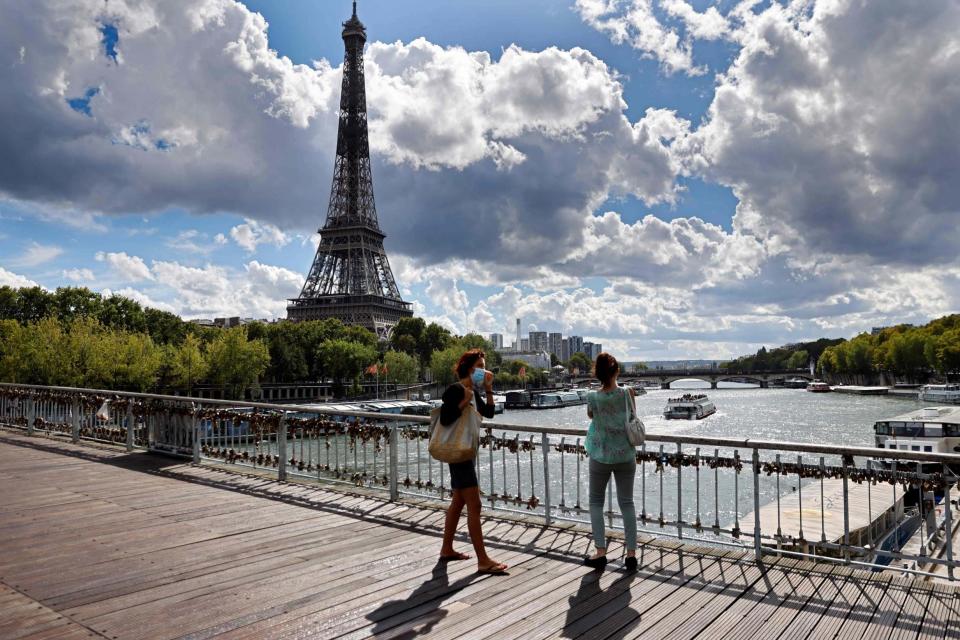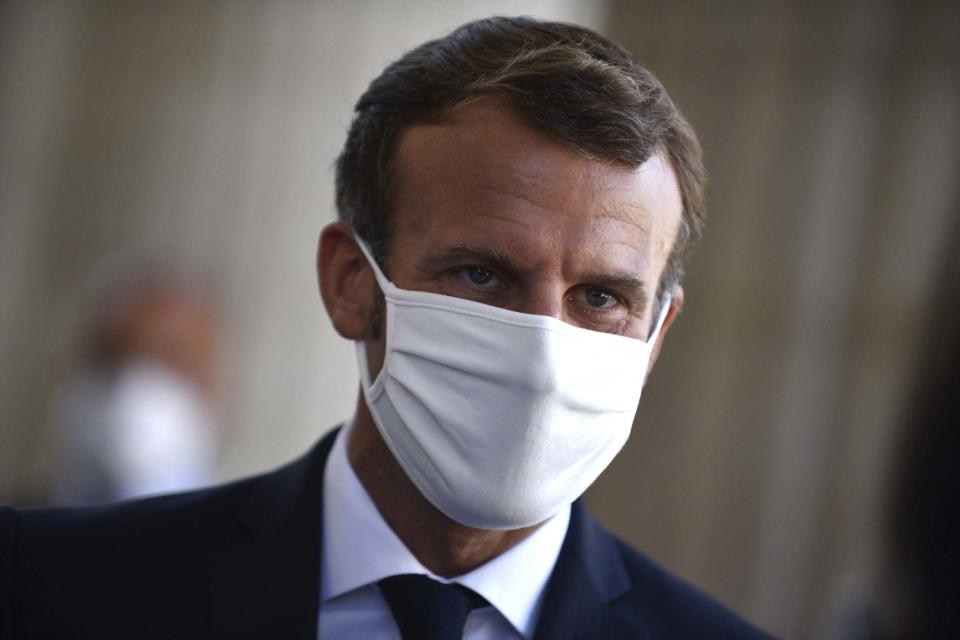La belle vie goes on — a portrait of Paris

The air is warm for this time of year, the sun shining and the morning smell of strong coffee and croissants at every street corner offers a wonderful reminder that we are in Paris. You could almost be forgiven for thinking that nothing has happened since March.
But it’s the small details that give our new reality away: couples kissing have vanished, the Chinese and Russian newlyweds who usually stand on Paris’s bridges to be photographed in their wedding gowns are nowhere to be seen, and of course, everyone is wearing a mask. Truthfully, since Paris came out of lockdown on May 11, life has not felt quite the same.
Parisians have been impatiently looking forward to La Rentrée this week, when children go back to school and parents to work. It feels like a hopeful sign that life is almost back as before, even if Covid is always lurking, a fact brought to the foreground with the news that infection rates have spiked throughout France. Deaths are still low compared with other countries but the infection rate is rising.
'Unlike New York and London’s city centres, Paris’s heart continues to beat in every quartier'
President Emmanuel Macron has told us what we needed to hear: “We will have to learn how to live with the virus.” In other words, we won’t stop the country again unless absolutely necessary.
To show he is serious about this yesterday France announced Europe’s biggest spending scheme to relaunch its economy; a €100 billion (£88 billion) package, to prevent unemployment exploding and the economy collapsing and to lay the ground for the future. The French economy has suffered greatly, contracting by 13.8 per cent in the second quarter, faring worse than many eurozone countries.
Another lockdown would put it on its knees. “If all of us, together, act responsibly, we’ll successfully get through this,” declared the President. By which he meant, if we all follow the simple rules of social distancing, washing hands and wearing masks, we will be fine. All this certainly sounds easy to do with a little discipline and feels on the whole painless, if of course annoying.

Children must go back to school for their sanity as much as ours and, simply, in order for us all to resume work fully away from home-schooling, and for the economy to start roaring again. As many school heads will have told their pupils this week, these are exceptional times and this is a Rentrée unlike any other.
The French state and the Paris town hall, the great welfare providers, have seen to it that we are prepared; they have been working hard on the logistics.
The country might have lacked masks and personal protection equipment at the start of the pandemic. It has now sorted out the mess, or so it seems. Every bus stop has been fitted with sanitising gel dispensers; every shop and café has a hydroalcoholic gel fountain activated by foot pedals, and museums have been competing for the most alluring sanitising mist spraying machines.
Another big change in Paris this week has been the obligation to wear facemasks at all times and in all places, with the exception of cafés and restaurants (once seated at a table).
This didn’t come as much as a shock, nor did it feel like an unbearable infringement on our freedom. Parisians saw it coming after weeks of face masks being imposed gradually. Apart from those who wear their masks on their chin, Parisians look surprisingly compliant.
2.148m
population of Paris
The fact that all children from the age of 11 must come to school with two masks and wear one in class and in playgrounds forces families to play the same tune and learn to leave home masked.
Hearing of the 10,000 anti-masks protesters in Berlin threatening to storm the Reichstag, Rodrigue, the waiter at my local café, rolled his eyes: “Don’t Germans have other more pressing issues than to oppose what might actually save their lives?”
300,181
confirmed Covid-19 cases
Perhaps if Parisians have been disciplined so far, it is because they read the news and check daily figures.
The French government provides Covid data every day and it has become a ritual at apéritif time to discuss the latest statistics.
Wearing face masks at all times seem like a small price to pay to avoid a return to lockdown.
Unlike in Britain where people seem to prefer working from home than return to the office, 83 per cent of French office staff are returning to work where masks have been made compulsory.
The 21-page government protocol sounds arcane at times but on the whole people, especially Parisians, are simply happy to return to the office and leave their small flats.
30,706
total death toll
The most vulnerable or worried may remain at home and opt for télétravail (work from home) if they wish. This seems like a fair balance.
However, learning how to live with Covid in Paris means a paradigm shift with far-reaching cultural, urban and architectural consequences.
Anne Hidalgo, at the helm of the Paris municipality for the last 19 years (first as deputy mayor, then as mayor), used the lockdown to great electoral effect. Shrewdly understanding that Parisians would favour a more environmentally friendly way of living, she entered an alliance with the Greens and easily won the second round of the local elections at the end of June.
7,000
new coronavirus infections over 24 hours
Together with the Greens, Hidalgo hit the ground running and has in just two months enforced radical changes to the city, arguing that, with Covid, there was no going back to the way we used to live. Hell is paved with good intentions, and the results are not exactly living up to many people’s idea of Paris.
Already crammed with expensive and ugly urban furniture, Paris’s boulevards and avenues are now covered by a sea of disparate tables and chairs from local cafés and bistros. At first, we all thought it was a nice idea, and the reason behind it was of course laudable.
Café and restaurant owners have greatly suffered from the three-month closure and allowing them to occupy the space around them meant they could try and compensate for lost trade.
But what has been authorised in haste and without consultation with residents who have to endure noise and loss of public space has just been prolonged for another year.
20
daily death toll
Our new normality is sinking in, and it doesn’t feel quite right. This well-intended scheme means, sadly, that private interests have cannibalised public space in the name of moral compensation.
Pedestrians, among them parents with buggies, will from now on have to zig-zag through this sprawling forest of café terraces and their cohort of flowerpots, garishly painted crates, cordons and parasols emphatically used to mark this newly privatised territory. Progress?
5,783
weekly average of infections
The same goes for cycling. Overnight, whole streets and strategic arteries like Rue de Rivoli, linking the west to the east of the city, have been wholly dedicated to cycling. Magnifique! exclaimed many Parisians like me, who flooded social networks with their videos of Paris suddenly looking like Amsterdam.
83 %
of French office staff returning to work *figures correct as of 3 September (Reuters)
No more polluting cars! Bienvenue to the future of cities! Great, except that it was imposed without much forethought and little dialogue with Parisians.
As for conceiving those new cycling routes, it looks as if not one decent designer was available for the job. Thousands of yellow plastic bollards marking cycling lanes are now scarring streets
Alas, venting criticism is deemed reactionary, if not plain immoral.
Unlike New York and London’s city centres, for instance, Paris’s heart continues to beat in every quartier, Covid or not, and whether people work from home or not. Paris is made of a mosaic of buoyant villages, and no business districts as such.
The risk of Paris becoming deserted is nil. And if there is life in a city, there is hope, even in a sea of chairs, tables and ugly yellow bollards!
Read more
I moved to Paris during the pandemic and it was magnifique
Confusion as UK split over travel quarantine as latest R rate due-LIVE

 Yahoo Sport
Yahoo Sport 





































